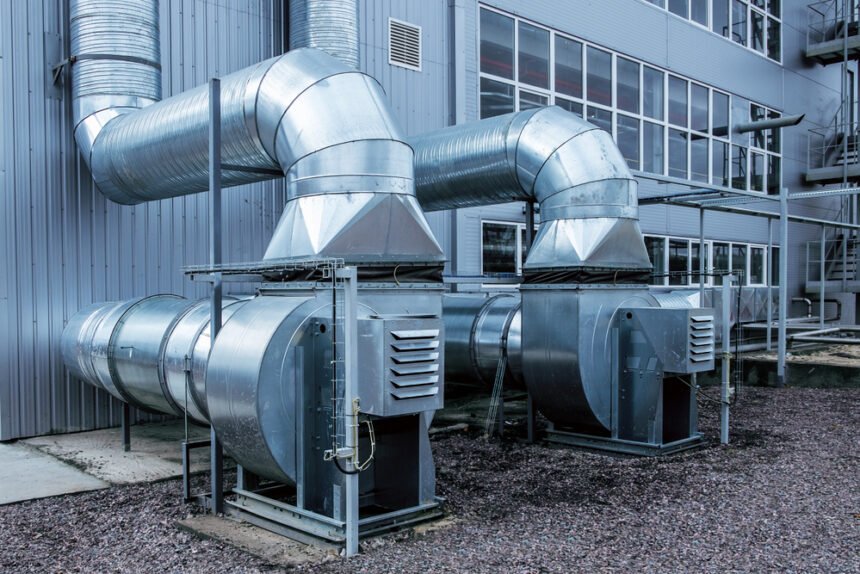In industrial and manufacturing environments, dust extraction systems are indispensable for maintaining air quality, protecting worker health, and ensuring compliance with safety regulations. These systems capture harmful particulates generated during processes like grinding, welding, or material handling, preventing them from contaminating workspaces or posing explosion risks. With advancements in technology and design, modern dust extraction systems are tailored to address diverse challenges, from filtering combustible metal dust to managing fine, sticky particles. This article explores the types, components, design considerations, and applications of dust extraction systems, providing actionable insights for businesses seeking optimal solutions.
1. Key Components of Dust Extraction Systems
Dust extraction systems comprise several interconnected components that work synergistically to capture, transport, and filter contaminants. Understanding these elements is critical for effective system design:
- Collection Hoods/Arms: Positioned near dust sources, these devices capture airborne particles at their origin. Options include fixed hoods, flexible extraction arms, or integrated machine nozzles 13.
- Ductwork: The network of pipes or hoses transports contaminated air to the filtration unit. Proper sizing and layout minimize pressure drops and ensure efficient airflow 6.
- Pre-Separators: Cyclones or spark traps remove larger particles or hazards (e.g., flying sparks) before air reaches the filter, extending filter life and enhancing safety 13.
- Filtration Unit: The core of the system, where contaminants are separated. Dry systems use filter cartridges or baghouses, while wet systems employ water sprays to trap particles 713.
- Fan/Blower: Generates suction to pull air through the system. Its capacity depends on the required air volume and resistance within the ductwork 13.
- Control Systems: Monitor performance, regulate airflow, and trigger alarms for maintenance or hazards like filter clogs 13.
2. Types of Dust Extraction Systems
The choice between dry and wet systems hinges on the dust type, particle size, and operational requirements.
Dry Dust Extraction Systems
Dry systems are widely used for non-combustible, free-flowing dust such as wood, cement, or food particles. They operate by drawing air through filters (e.g., cartridge filters, baghouses) that trap particulates. Collected dust is discharged into hoppers for manual disposal. Key advantages include:
- High efficiency for fine particles (down to 0.3 microns) 7.
- Lower water usage and sludge management costs.
- Adaptability to industries like woodworking, pharmaceuticals, and ceramics.
However, dry systems require additional safety measures for combustible dust, such as spark detection or explosion vents 67.
Wet Dust Extraction Systems
Wet scrubbers are ideal for sticky, hygroscopic, or explosive dust (e.g., metal, coal). They use water sprays to agglomerate particles, forming sludge that settles in tanks. Benefits include:
- Mitigation of fire risks by suppressing dust ignition 7.
- Effective handling of fine, adhesive particles.
- Common applications in metalworking, chemical processing, and foundries.
Drawbacks include higher water consumption and the need for sludge treatment before disposal 7.
3. Designing an Effective Dust Extraction System
A well-designed system balances performance, safety, and cost-efficiency. Critical considerations include:
- Facility-Specific Requirements: Assess dust characteristics (size, combustibility), airflow needs, and facility layout. For example, combustible dust may necessitate outdoor collector placement 67.
- Ductwork Optimization: Proper duct sizing reduces energy loss. Longer ducts or excessive bends increase resistance, requiring more powerful fans 6.
- Compliance with Regulations: Adherence to standards like NFPA (for fire safety) and SMACNA (for duct design) is non-negotiable. Systems may integrate fire suppression technologies, such as CO2 sprinklers 6.
- Energy Efficiency: Variable-frequency drives (VFDs) adjust fan speed based on demand, lowering energy costs 6.
4. Safety and Regulatory Compliance
Industrial dust, particularly combustible varieties, poses significant risks. Key safety measures include:
- Explosion Protection: Spark detection systems, explosion vents, and flame-retardant filters mitigate deflagration risks in dry systems 715.
- Fire Suppression: Wet systems inherently reduce fire hazards, while dry systems may require supplemental CO2 or sprinkler systems 6.
- Worker Health: Systems must capture respirable particles (e.g., silica, metal fumes) to prevent occupational illnesses 15.
Regulatory bodies like OSHA and NFPA mandate regular inspections and maintenance to ensure ongoing compliance 6.
5. Maintenance and Operational Best Practices
Regular upkeep ensures longevity and efficiency:
- Filter Maintenance: Dry systems require periodic filter replacement or cleaning. Pulse-jet systems automate this process, reducing downtime 13.
- Sludge Management: Wet systems need routine tank cleaning and sludge dewatering to prevent clogging 7.
- System Monitoring: Real-time pressure sensors and airflow monitors alert operators to blockages or leaks 13.
6. Applications Across Industries
Dust extraction systems are versatile, serving sectors such as:
- Metalworking: Wet scrubbers manage explosive aluminum or titanium dust 15.
- Woodworking: Cyclone separators and baghouses handle sawdust and wood chips 7.
- Pharmaceuticals: HEPA-filtered systems ensure sterile environments 13.
- Construction: Mobile units control silica dust during cutting or grinding 15.
Conclusion
Dust extraction systems are vital for safeguarding health, enhancing productivity, and meeting regulatory demands. Whether opting for dry or wet systems, businesses must prioritize tailored designs, robust safety features, and proactive maintenance. By partnering with experienced providers and leveraging advanced technologies, industries can achieve cleaner, safer, and more efficient operations.




